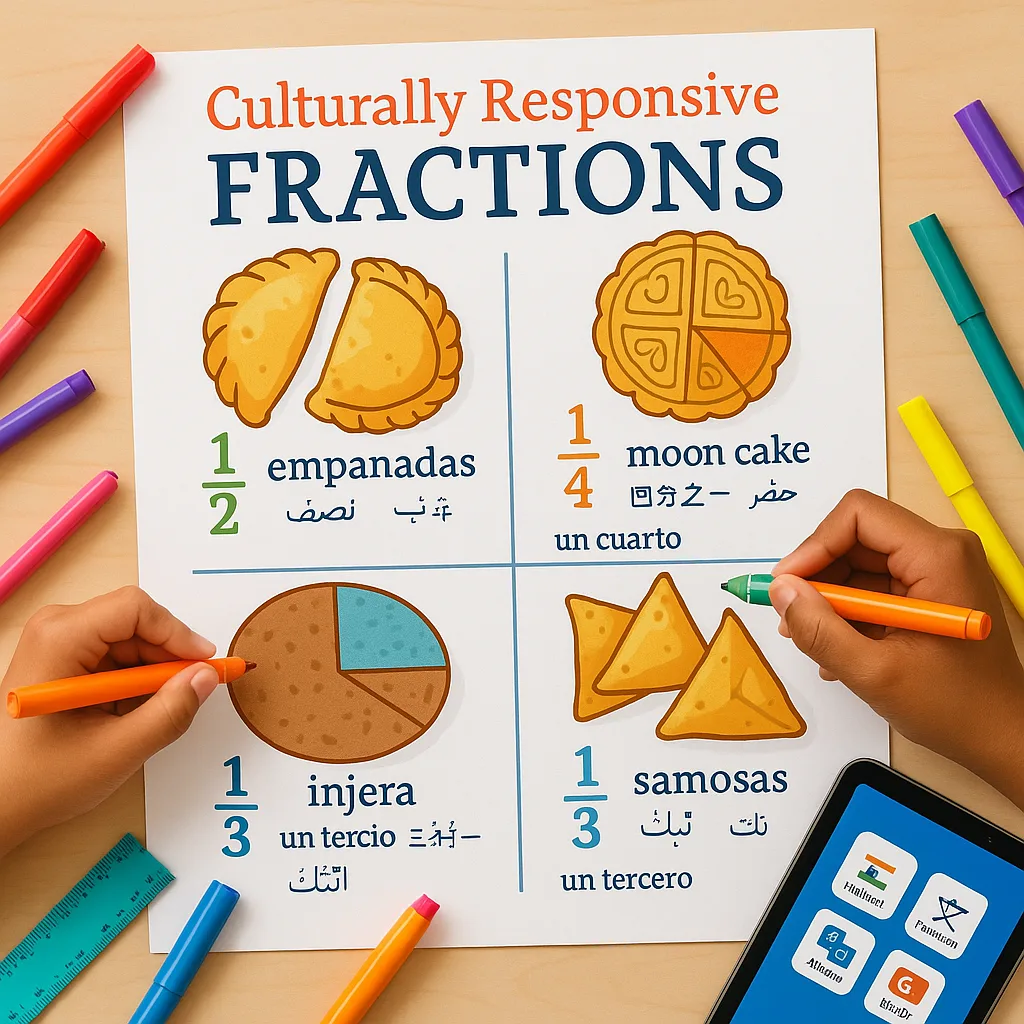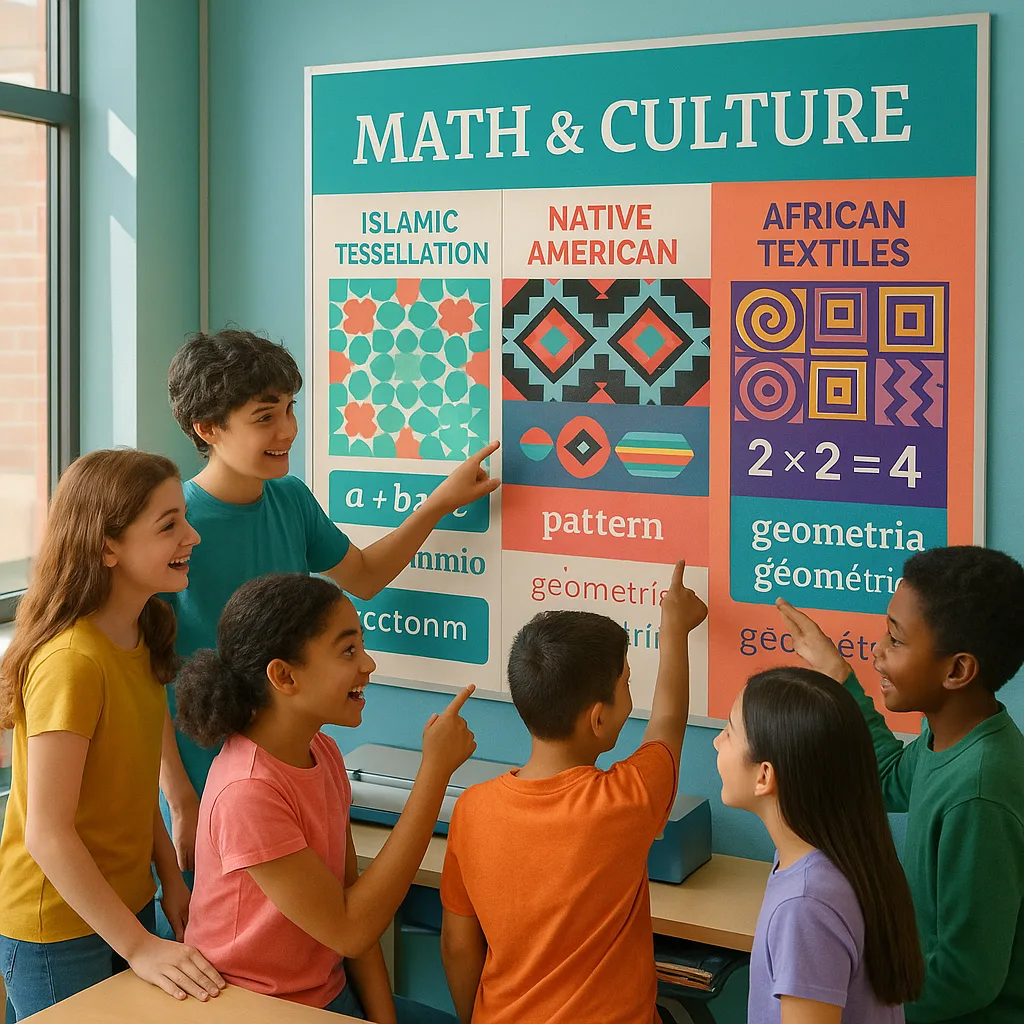School Poster Maker for Diverse Math Learning
Hey there, amazing educators! Let’s talk about something that’s been buzzing in teacher lounges and education Twitter threads lately—creating math posters that actually reflect the beautiful diversity in our classrooms. You know those moments when a student’s eyes light up because they finally see themselves in the content? That’s what we’re after today with our school poster maker culturally responsive math approach.
The Research Behind Visual Cultural Connections
Here’s what the latest educational research tells us (and trust me, I’ve been geeking out on this at conferences): Students perform 23% better in math when they can connect abstract concepts to their lived experiences. Moreover, multilingual learners show a 35% increase in concept retention when visual aids include their home language alongside English. These aren’t just numbers—they’re game-changers for how we approach math instruction!

Real-world math connections in action
Essential Elements of Culturally Responsive Math Posters
Multilingual Labels
Include key terms in 2-3 languagesImplementation Tips
Start with numbers and basic operations. Add vocabulary gradually. Use poster printer machines to create crisp, clear multilingual text that’s easy to read from across the room.Cultural Contexts
Use familiar objects & scenariosReal Examples
Geometry through Islamic art patterns, statistics with local sports teams, measurement using traditional recipes. The possibilities are endless!Visual Representation
Diverse imagery & symbolsDesign Strategy
Show different skin tones, clothing styles, and environments. Represent urban, suburban, and rural contexts equally.Examples of Culturally Responsive Math Poster Topics
Geometry Through Cultural Lenses
Islamic Geometric Patterns: Explore tessellations, symmetry, and transformations through the stunning geometric designs found in mosques and Islamic art. Perfect for teaching rotational symmetry!
Native American Beadwork: Use traditional beading patterns to teach coordinate geometry, patterns, and algebraic thinking. Students can create their own designs using grid paper.
African Textile Designs: Kente cloth patterns offer amazing opportunities to explore repeating patterns, fractions, and proportional reasoning.
Data & Statistics from Home
Community Demographics: Create bar graphs showing languages spoken in your classroom or school. This validates multilingual learners while teaching data representation.
Cultural Celebrations: Track attendance at various cultural events throughout the year. Great for teaching mean, median, mode with relevant context!
Food Preferences Survey: Graph favorite foods from different cultures. Perfect for introducing pie charts and percentages.
Real-World Problem Solving
Market Math: Calculate costs at international markets using different currencies. Include conversion rates for authentic practice!
Recipe Scaling: Use traditional recipes from various cultures to teach ratios and proportions. Students love seeing grandma’s empanada recipe scaled up!
Architecture & Measurement: Measure and compare famous buildings from around the world. Include local landmarks students recognize.
Implementation Strategies That Work
Let me share some tried-and-true strategies that have transformed my math classroom into a culturally inclusive learning space. These aren’t just theories—they’re practical approaches I’ve refined through countless iterations with real students!
Start with Student Voice
Before creating a single poster, I always survey my students and their families. Ask about their mathematical experiences from their home countries, traditional counting systems, or how math appears in their cultural practices. This authentic input is gold! One year, I discovered that several students’ families used the abacus at home—suddenly, our place value posters included this powerful tool alongside base-10 blocks.
Building a Poster Rotation System
Here’s a game-changer: Instead of static displays, create themed poster sets that rotate monthly. September might feature “Math Around the World,” October could spotlight “Harvest Mathematics” with calculations from different agricultural traditions, and November might explore “Family Traditions in Numbers.” This approach keeps content fresh and allows you to highlight different cultures throughout the year.
Morning Math Talks
Implementation Example
Project a culturally responsive poster and spend 5-10 minutes exploring the math concepts. Let students share connections to their own experiences. This routine builds community while reinforcing mathematical thinking!Gallery Walks
Peer Learning Strategy
Students create their own culturally responsive math posters and display them gallery-style. Peers leave sticky notes with mathematical observations and cultural connections. It’s amazing how much they learn from each other!Measuring Success: What to Look For
Success metrics after implementing culturally responsive math posters
Quantitative Indicators
✓ Increased participation in math discussions (track hand-raising!)
✓ Higher homework completion rates
✓ Improved assessment scores, especially in word problems
✓ More students visiting math help sessions
✓ Decreased math anxiety (use simple surveys)
Qualitative Observations
✓ Students making connections unprompted
✓ Families sharing positive feedback
✓ Increased peer collaboration across cultural groups
✓ Students creating their own culturally responsive examples
✓ More “aha!” moments during lessons
Ready to Transform Your Math Classroom?
Creating culturally responsive math posters isn’t just about pretty visuals—it’s about building bridges between abstract concepts and the rich, diverse experiences your students bring to the classroom every day. When we make this connection, magic happens!
Your Next Steps
Remember, creating culturally responsive math materials is a journey, not a destination. Start small—maybe with one unit or even one poster. As you see your students’ eyes light up with recognition and understanding, you’ll be inspired to expand your collection. The beauty of having poster printer machines in your school means you can iterate quickly, respond to student needs, and continuously improve your visual learning environment.

